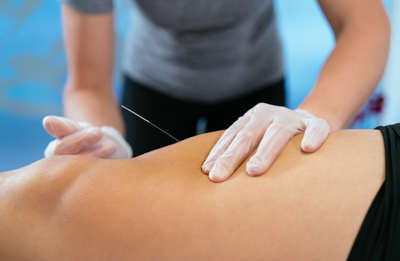
Reopening an acupuncture clinic is a personal decision. Evaluate risks associated with reopening in your area. This includes checking for reports of new coronavirus cases in your local region. When comfortable and the data supports a safe reopening of your clinic, the following steps may be helpful.
Check with local and state ordinances to ensure compliance for reopening your office. Also, check with your state acupuncture board. For example, the California Acupuncture Board allows for acupuncture offices to remain open. However, the states of Ohio and New Hampshire have only recently allowed acupuncturists to reopen.
Check with your malpractice insurance carrier about liability coverage. Your carrier may suggest that patients sign a form advising them of COVID-19 issues. For example, the American Acupuncture Council encourages the use of a form that they provide for free to licensed acupuncturists. Have the patients sign the form remotely so that there is no need to use a pen in the workplace environment.
Update your office to as many hands-free devices and procedures as possible. This includes infrared sensors in the bathrooms for wash basins, toilets, and soap dispensers. The same applies to doorways, check-in operations, and payments. Consider adding features like Apple Pay, Venmo, Paypal, and other hands-free payment methods.
Some acupuncturists provide herbal medicine consultations for their existing patients with drop shipping or outdoor pickup areas. This includes telecommunication with the patient and visual sharing of tongue diagnosis via text or an online service. Provide a contact button on your website to facilitate communication. If you receive spam via web contact buttons, enable a service such as captcha to prevent spam.
Social distancing is advisable. In some offices, reception area chairs are fewer and further between each one. In other offices, patients relax in their motor vehicles and enter the office at the specified appointment time. In addition, patients relax on the treatment table and chairs are removed from the treatment room. Remove toys, magazines, and other non-essential items that may be handled by staff and patients.
Screen patients by telephone or online when making an appointment, advising them to reschedule if they have a fever, COVID-19 symptoms, or have knowingly been exposed to COVID-19. Screen patients when entering the office to ensure they do not have contagious disease symptoms. Hand sanitizer availability at the front desk is advisable and is now considered a standard procedure for patient use.
Check each patient’s temperature with a hands-free device such as a medical grade infrared thermometer when entering your facility. Advise patients to enter the office wearing a mask and have all staff wear masks as well.
Wear gloves and a mask when treating patients. If not wearing gloves, maintain routine handwashing. N95 masks provide greater protection than many other types of masks, although availability is limited. Some practitioners are wearing face shields for added protection. Have ample sanitizers for cleaning surfaces. EPA-registered, hospital-grade disinfectants are recommended.
Use disposable gurney (flat stretcher) sheets to cover treatment tables. These are widely available online. 40” × 90” sheets work well for treatment tables. Some brands have a comfortable paper top and a thin plastic lining below and are usually 50 cents to one dollar per sheet. Use disposable pillow covers. Have a dedicated area in the treatment room for patients for personal items and clothing. This area requires disinfection after use.
Hands-free operation for waste disposal receptacles is strongly advisable. It is advisable to purchase an air filter for treatment rooms that have features like UV sanitizing of the air. Try to avoid wearing jewelry and remove your clothes and wash them upon completion of the work day (either when returning home or at an office facility). We hope these steps help in the smooth transition back to a regular workday.


